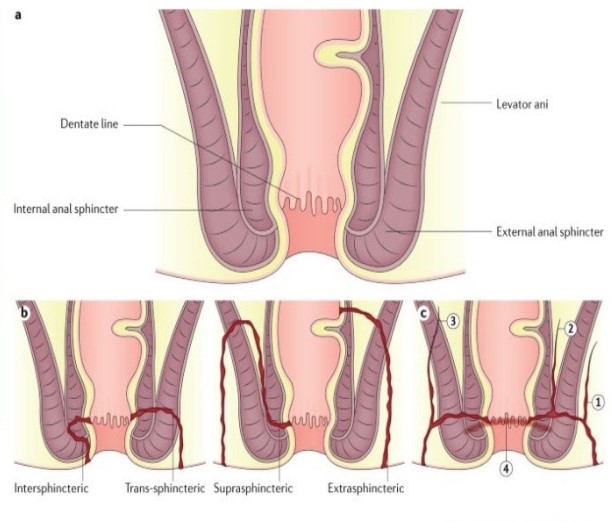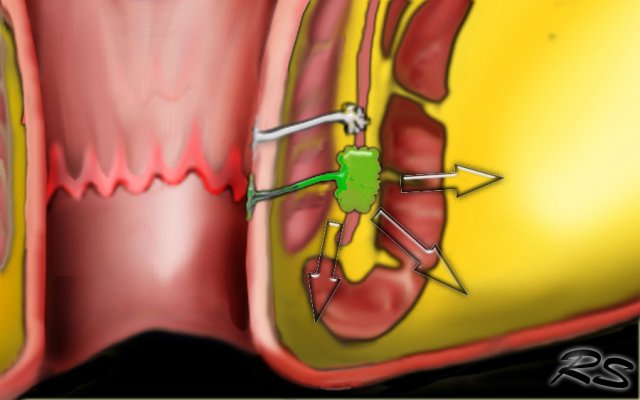Table of Contents
The Power of X-Ray: Unleashing the Potential of Fistulagrams Farmington
Intro
Fistulagrams Farmington is a revolutionary x-ray procedure that has the potential to unlock new possibilities in the medical field. By puncturing the fistula and injecting contrast, the interventional radiologist is able to take multiple x-ray images to diagnose and treat conditions with greater accuracy than ever before. This technique is incredibly powerful and has been proven to be extremely effective in diagnosing and treating many different types of medical conditions. In this blog post, we’ll discuss the power of x-ray and how fistulagrams Farmington can help you and your doctor get the best possible results from your medical care.
What is a Fistulagram Farmington?
A Fistulagram Farmington is a unique and innovative x-ray procedure that offers a multitude of possibilities in the medical field. It involves puncturing the fistula, a small abnormal passageway, and injecting contrast material. This allows the interventional radiologist to take multiple x-ray images to accurately diagnose and treat various medical conditions.
The power of this procedure lies in its ability to provide detail and precise images of the affect area, enabling healthcare professionals to make more inform decisions regarding treatment options. Fistulagrams Farmington have been proven to be highly effective in diagnosing and treating a wide range of conditions, such as fistulas, abscesses, and infections.
One of the key benefits of this procedure is its minimally invasive nature, meaning that it typically requires only a small incision and carries a lower risk of complications compare to traditional surgical techniques. Additionally, the use of contrast material allows for clearer visualization of the fistula and surrounding structures, improving accuracy and reducing the need for additional diagnostic procedures.
If you are schedule to undergo a Fistulagram Farmington, it is important to understand the procedure, its benefits, and how to prepare for it. In the following sections, we will delve deeper into the details of how this procedure works, its potential benefits, and what to expect before, during, and after your Fistulagram Farmington.

How Does it Work?
The process of how a Fistulagram Farmington works is truly fascinating. It all begins with the skill hands of an interventional radiologist who will puncture the fistula, a small abnormal passageway, and inject contrast material. This contrast material serves a crucial role in the procedure as it allows for clearer visualization of the affect area.
Once the contrast material is inject, the interventional radiologist will use an x-ray machine to capture multiple images of the fistula and surrounding structures. These images provide a detail and precise view of the condition, enabling healthcare professionals to make inform decisions regarding treatment options.
The entire procedure typically takes about one to two hours to complete, and it is done under local anesthesia, meaning you will be awake but numb in the area being treat. The minimally invasive nature of this procedure is a significant benefit, as it only requires a small incision and carries a lower risk of complications compare to traditional surgical techniques.
By utilizing the power of x-ray technology, a Fistulagram Farmington is able to provide accurate diagnosis and target treatment options, ultimately leading to improve patient outcomes. It is truly a groundbreaking procedure that has the potential to transform the field of medicine.
The Benefits of Fistulagram Farmington
When it comes to medical procedures, the benefits of Fistulagram Farmington are numerous and significant. This innovative x-ray technique offers a range of advantages that can greatly improve patient outcomes and overall medical care.
First and foremost, Fistulagrams Farmington provide highly accurate and detail images of the affect area. This level of precision allows healthcare professionals to make more inform decisions when it comes to treatment options. By visualizing the fistula and surrounding structures clearly, the interventional radiologist can pinpoint the exact location and severity of the condition. This accuracy leads to more target and effective treatment plans, minimizing the need for additional procedures or interventions.
Another key benefit of Fistulagram Farmington is its minimally invasive nature. With only a small incision require, the risk of complications is significantly reduced compare to traditional surgical techniques. This means less pain and a quicker recovery time for patients. Additionally, the use of contrast material enhances the visualization of the fistula, reducing the need for additional diagnostic procedures and streamlining the overall treatment process.
Overall, the benefits of Fistulagram Farmington cannot be overstate. From improve accuracy and precision to minimal invasiveness and streamline treatment plans, this groundbreaking procedure has the potential to revolutionize the field of medicine.
Preparing for Your Procedure
Preparing for your Fistulagram Farmington procedure is an important step in ensuring a smooth and successful experience. Before your schedule appointment, there are a few things you can do to prepare.
First, it’s essential to communicate with your healthcare provider about any medications you are currently taking. They may advise you to temporarily stop taking certain medications, especially those that can interfere with the procedure or the contrast material. It’s also crucial to inform your doctor of any allergies or previous adverse reactions to contrast material or other medications.
In addition to medication adjustments, you may be instruct to fast for a certain period before your procedure. This is typically done to ensure an empty stomach, which can improve the quality of the images obtain during the procedure.
On the day of your Fistulagram Farmington, it’s important to wear comfortable clothing and remove any jewelry or metal objects that could interfere with the imaging equipment. You may also want to arrange for transportation to and from the procedure, as you may be advise to avoid driving afterwards.
By following these preparation steps and discussing any concerns or questions with your healthcare provider, you can feel more confident and prepare for your Fistulagram Farmington procedure. Remember, preparation plays a crucial role in ensuring a successful outcome and a positive patient experience.

What to Expect During Your Procedure
During your Fistulagram Farmington procedure, you can expect a safe and efficient process that is design to provide accurate diagnosis and target treatment options. The procedure typically takes about one to two hours to complete, and you will be awake but numb in the area being treat.
First, the interventional radiologist will puncture the fistula and inject contrast material. This is done to enhance the visualization of the affect area and provide clearer x-ray images. The contrast material may cause a warm or flushing sensation, but this is normal and temporary.
Once the contrast material is inject, the interventional radiologist will use an x-ray machine to capture multiple images of the fistula and surrounding structures. It is important to remain still during this process to ensure the highest quality images.
Throughout the procedure, the interventional radiologist and medical staff will closely monitor your condition and ensure your comfort. You may be ask to provide feedback or answer questions to assist in the process.
After the procedure, you may be allow to go home the same day, depending on your specific situation. The interventional radiologist will provide instructions for post-procedure care and any necessary follow-up appointments.
Overall, you can expect a thorough and well-manage procedure that aims to provide the best possible outcomes for your medical care.
After Your Fistulagram Farmington: Recovery and Follow-up
Once your Fistulagram Farmington procedure is complete, it’s important to focus on your recovery and follow-up care. This will ensure the best possible outcome and a smooth transition back to your daily routine.
After the procedure, you may experience some mild discomfort or soreness at the site of the incision. This is normal and can be manage with over-the-counter pain medications as direct by your healthcare provider. It’s also important to keep the area clean and dry to prevent infection.
In the days following your procedure, it’s important to follow any post-procedure care instructions provide by your interventional radiologist. This may include avoiding strenuous activities or heavy lifting for a certain period of time, as well as keeping the incision site clean and cover.
It’s also important to attend any follow-up appointments schedule by your healthcare provider. During these appointments, they will assess your progress, answer any questions you may have, and discuss any further treatment options if necessary.
Remember, every individual’s recovery process may vary, so it’s important to listen to your body and communicate any concerns or issues with your healthcare provider. By following your recovery plan and attending follow-up appointments, you can ensure a successful outcome and a smooth transition back to optimal health.

